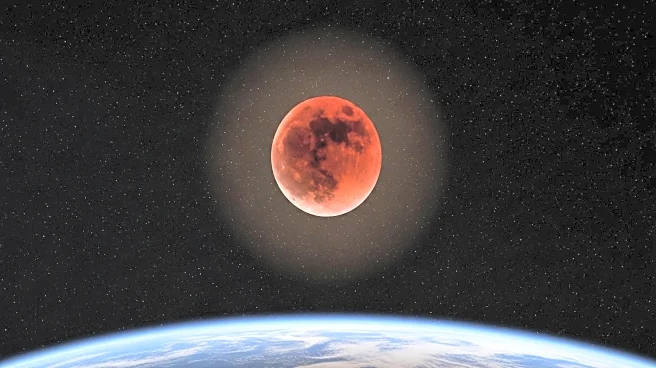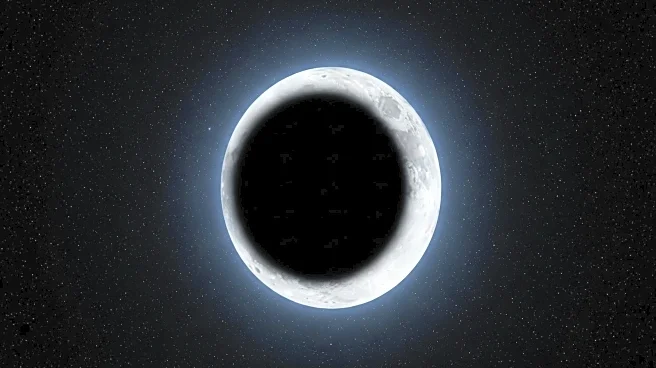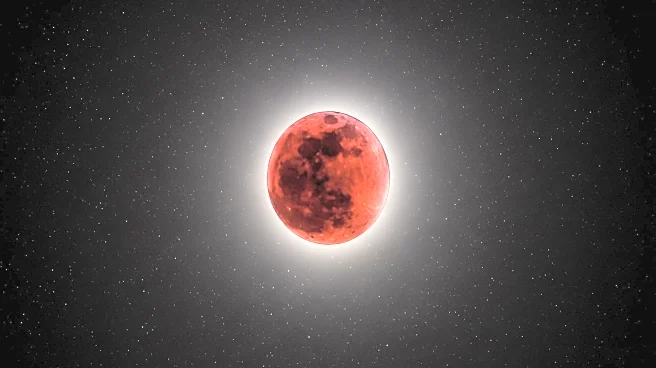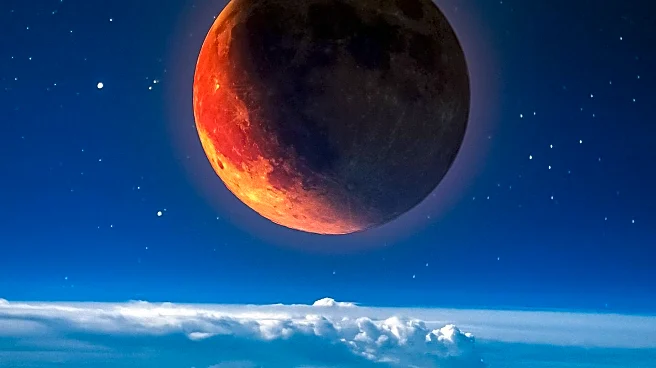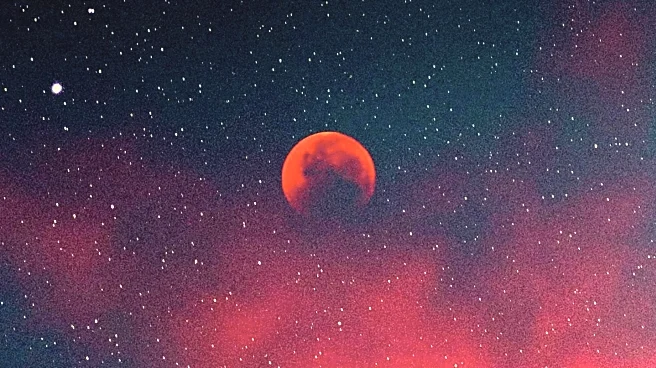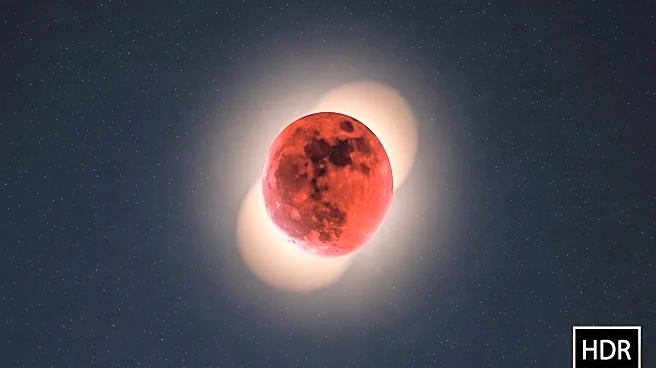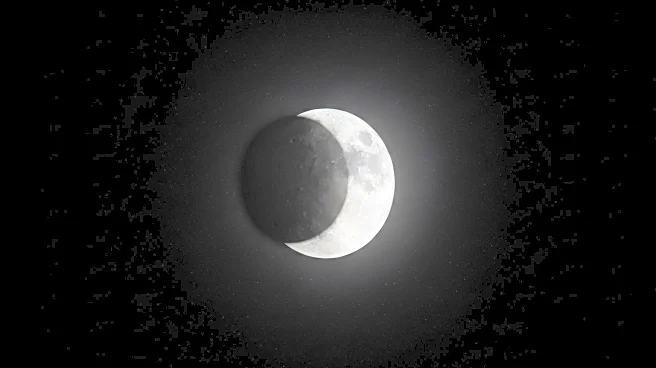What is the story about?
What's Happening?
The September corn moon of 2025 will coincide with a total lunar eclipse, transforming into a 'Blood Moon' on September 7. This full moon, traditionally named for its association with corn harvesting in the northern United States, will appear reddish due to Earth's shadow during the eclipse. The event will not be visible from the United States but can be observed in parts of Australia, India, Cairo, and South Africa. The eclipse will last for 82 minutes of totality, with approximately 77% of the world's population able to witness some part of the event. The next total lunar eclipse visible in the U.S. is scheduled for March 2-3, 2026.
Why It's Important?
The transformation of the corn moon into a 'Blood Moon' during a lunar eclipse is a significant astronomical event, offering insights into the celestial mechanics of lunar phases and eclipses. This phenomenon provides educational opportunities for understanding the interplay between the sun, Earth, and moon. Although not visible in the U.S., the event highlights the global nature of astronomical observations and the importance of international collaboration in sharing data and experiences. The cultural significance of the corn moon, tied to agricultural cycles, adds an additional layer of interest to the event.
What's Next?
Astronomers and sky watchers will look forward to the next total lunar eclipse visible in the United States in March 2026. This future event will allow North American observers to experience the 'Blood Moon' phenomenon firsthand. Meanwhile, the September eclipse will continue to be studied for its effects on lunar visibility and atmospheric conditions. The ongoing interest in lunar eclipses may lead to increased public engagement with astronomy and related sciences, fostering a deeper appreciation for celestial events.
AI Generated Content
Do you find this article useful?





